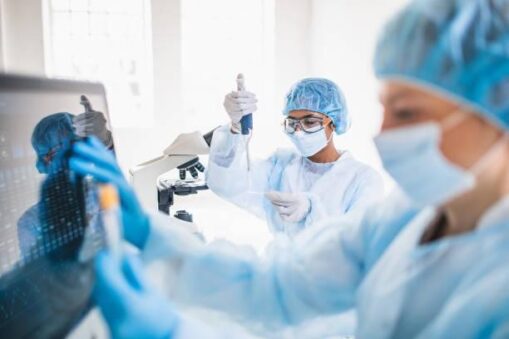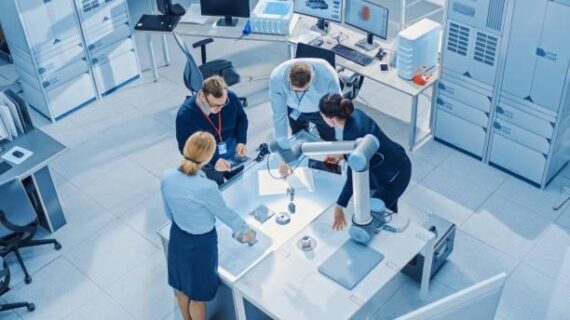- Your cart is empty
- Continue Shopping
Best Practices for Lab Relocation and Setup
- Lab Equipment
- Posted on
-
by Siby
- 0 comments

Moving a laboratory can be difficult and costly due to the fact that laboratories usually include expensive equipment and potentially hazardous materials. It doesn’t matter if you’re moving down the hall or across the country; every detail is significant, and therefore, being fully prepared for your move is of the utmost importance.
So that you can get an early start on the packing and moving process, we will discuss the considerations you must make before, during, and after the relocation of your laboratory.
About Lab Relocation
Pre-move preparation, final preparation and the move itself, and post-move recommissioning and setup are the three steps of laboratory relocation. These stages necessitate extensive planning and organization, as well as experience in transporting equipment and materials safely and establishing a viable new area. As a result, laboratory relocation is a large, complicated project that would benefit from the assistance of a project manager and an expert team. Working with a relocation service provider helps reduce stress and minimize disruptions to everyday operations at every stage.
For a successful lab move, the initial planning step is crucial. Ideally, lab planning should start as soon as it is determined that more lab space is required. Creating a budget and timeframe, designing decommissioning and recommissioning protocols, informing key stakeholders, and dozens of practical concerns including transportation are all part of this process. Because downtime and disruptions can be costly, some companies may find it more cost-effective to relocate without completely shutting down operations. This is conceivable, but it will necessitate much planning.
All of the processes that were laid out during the planning phase must be controlled after the transfer begins. A relocation service provider can help with not just the planning but also the practicalities of the move. To guarantee that equipment arrives in good working order, it must be properly decommissioned, packed, and transported safely. Service providers offer the resources and experience needed to carefully pack and transport various types of instruments.
Problems develop when a number of elements are ignored during a relocation. A simple but crucial feature like using freight elevators instead of passenger elevators to safely handle the weight of instruments during a transport should be factored in. The project manager and relocation team are aware of all the factors to consider and can account for every detail to ensure a smooth transition. Adjustments and contingency plans will almost certainly be required, so working with a project manager and team that can change fast is critical.
The post-move phase begins after all of the equipment, supplies, and samples have been transported to the new laboratory area. You need to manage instrument recommissioning, validation and qualification, and getting instruments and software onboarded so they can be used again as quickly as possible by scientists. IT connectivity, temperature and humidity management, and water and gas hookups are all possible infrastructure requirements. Following the migration, some service providers give additional services to assist with the return to normal operations.
A large, complex project like laboratory relocation necessitates a lot of planning, as well as an effective manager and support staff. Working with a relocation service provider at each stage of the process can ensure a smooth transfer and reduce workflow disruptions.
Best practices for lab relocation
When a facility update is required, one of the most stressful and challenging tasks you and your personnel will face is laboratory relocation. You may reduce the cost, stress, and time-consuming nature of a large-scale transfer by taking particular care with your laboratory relocation strategy. If you follow these guidelines, you’ll avoid many of the problems that come with lab refurbishment and relocation.

Prepare for your new location:
The key element of a successful lab relocation is preparation, which should begin months in advance. Scout out your new place ahead of time to detect any potential concerns. Measure hallways, elevators, and doorways ahead of time to figure out the best ways to get your vital equipment inside; you don’t want to discover this on the moving day! Make a note of your new space’s plumbing, mechanical, and electrical infrastructure so you can plan your new floor plan properly.
Examine your supplies and equipment:
It’s no secret that lab equipment, particularly expensive and vital equipment, has very stringent handling and environmental requirements. Take a complete, classified inventory of everything in your lab and consider the best method for transferring everything from equipment to samples. If you have live samples, be sure you have adequate refrigerated transportation in place so your team doesn’t miss weeks or even months of effort.
Schedule your tasks:

Make a thorough plan and schedule, b moving even a single piece of equipment. A typical laboratory relocation can take three to six months of planning. When relocating a laboratory, having a detailed strategy is essential, especially if you are moving to/from many locations. Following the definition of the scope of work, a project plan should be created that covers every operational aspect of the transfer, including schedules, ownership, and logistics. The plan should include a thorough timetable, identify and prioritize vital assets, define asset placement in the new location, outline anticipated logistical barriers and contingencies, a risk management plan, and any important transportation requirements, among other things. Allow enough time to design a plan that captures all of your laboratory’s requirements accurately. The strategy should then be reviewed and approved by everyone involved.
Examine Current Procedures:
A relocation move is an excellent opportunity to review your present procedures and discover areas for improvement. Take some time to think about how you may avoid bringing inefficient or needless practices into your new facility. You might be able to discover areas of wasteful spending that can be reduced or processes that can be improved using tools like automation or lean design.
Know the Laws and Regulations:
Depending on the type of work your lab does, you may need to appoint lab relocation services to transport potentially hazardous products. If this is the case, conduct your homework ahead of time to ensure you have the necessary permits for public safety. Familiarize yourself with the additional safety regulations, certifications, and third-party vendors required to get your new facility up and operating, ensuring that your current research is not disrupted.
Conclusion:
The capacity to successfully execute a laboratory relocation has an impact on your organization’s future productivity and profitability. A lab relocation, on the other hand, is a collection of complicated, interconnected tasks that necessitates meticulous planning, efficient harmonization, and correct execution, all while adhering to rigorous timetables and production schedules. While running a lab necessitates a unique mix of skills, responsibilities, and knowledge, controlling the complex inner workings of relocation is a key ability. Furthermore, most laboratory workers allocated to a move are already working full-time, which increases the risk of essential details being neglected.
